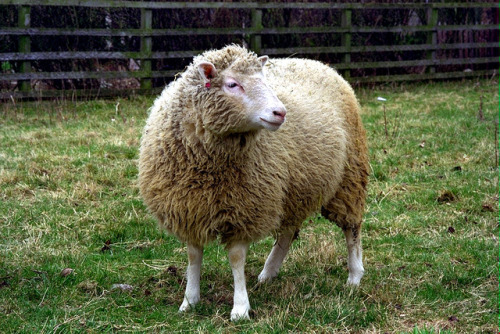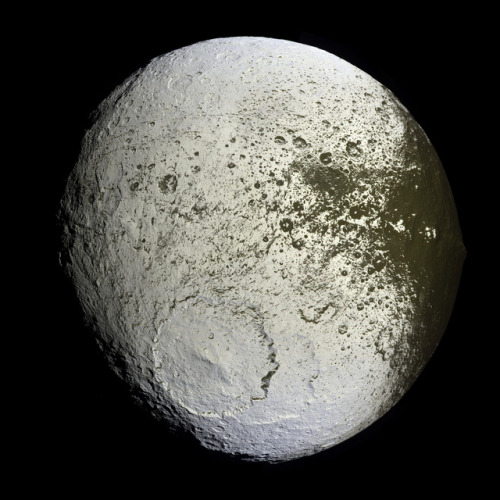Ask Ethan: Does Dark Energy Mean We’re Losing Information About The Universe?










Ask Ethan: Does Dark Energy Mean We’re Losing Information About The Universe?
“The universe’s expansion means our visible horizon is retreating; things faraway are vanishing continuously. (Albeit slowly, right now.) This would seem to imply we are losing information about the universe. So why is it the idea of losing information in a black hole’s event horizon is so controversial, if we’re constantly losing information to another horizon?”
As you look to greater and greater distances, you’re looking back in time in the Universe. But thanks to dark energy, what we can see and access today isn’t always going to be accessible. As galaxies grow more distant with the accelerated expansion of the Universe, they eventually recede faster than the speed of light. At present, 97% of the galaxies in the Universe aren’t reachable by us, even at the speed of light. But that isn’t the same as losing information. As a galaxy crosses over the horizon, its information never disappears from the Universe connected to us entirely. Instead, it gets imprinted on the cosmic horizon, the same way that information falling into a black hole gets imprinted on its event horizon. But there’s a fundamental difference between a black hole’s decaying horizon to the cosmic horizon’s eternal persistence, and that makes all the difference.
Come learn why even with dark energy, we don’t lose information about the Universe, but why the black hole information paradox is real!
More Posts from Drunkscience4u and Others






The Strangest Eclipse Fact Of All: The Moon’s Shadow Isn’t A Circle
“These imperfections along the edge of the lunar limb don’t just reflect peaks and valleys on the Moon’s surface, but result in sharp edges and corners appearing on the Moon’s shadow as well. Thanks to incredibly accurate mapping of elevation of the entire lunar surface by NASA’s Lunar Reconnaissance Orbiter, we know exactly what the profile of the Moon looks like. Combine that information with the Earth-Moon-Sun orbit, and we can derive what irregularities will be present during the August 21st, 2017 (or any) solar eclipse, when the Moon’s shadow passes across Earth’s surface.”
The Moon is spherical, and so its shadow should be a circle by simple geometry, right? Only, if we view it when it strikes Earth, it’s not even close to a circle. It’s stretched into an ellipse, and further complicated by irregular, sharp edges and corners. Why would it appear that way? As it turns out, three factors combine to get us there. The first is the fact that Earth is a sphere, not a disk, so any shadow falling on it gets stretched. The second is that the Moon’s sharp peaks, valleys and craters mean that its shadow gets irregularly distorted in a way that changes as its orbit continues. And the third is that Earth isn’t smooth, but exhibits significant changes in elevation and terrain.
Add them all up, and you’ve got the incredibly bizarre and ever-changing shape of the Moon’s shadow. Come see what the eclipse of August 21, 2017 will hold!

Mole-cool

Bumblebees mark the flowers they’ve visited with smelly footprints, and they can tell the difference between odors from family members’ feet and those of strangers, researchers have found.
By sniffing out these dainty footprints, bumblebees can locate good food and steer clear of flowers whose nutrients have been depleted, the scientists reported in a new study.
“Bumblebees secrete a substance whenever they touch their feet to a surface, much like us leaving fingerprints on whatever we touch,” Richard Pearce, a scientist at the University of Bristol in the United Kingdom, said in a statement.
Continue Reading.
Largest Batch of Earth-size, Habitable Zone Planets
Our Spitzer Space Telescope has revealed the first known system of seven Earth-size planets around a single star. Three of these planets are firmly located in an area called the habitable zone, where liquid water is most likely to exist on a rocky planet.

This exoplanet system is called TRAPPIST-1, named for The Transiting Planets and Planetesimals Small Telescope (TRAPPIST) in Chile. In May 2016, researchers using TRAPPIST announced they had discovered three planets in the system.

Assisted by several ground-based telescopes, Spitzer confirmed the existence of two of these planets and discovered five additional ones, increasing the number of known planets in the system to seven.

This is the FIRST time three terrestrial planets have been found in the habitable zone of a star, and this is the FIRST time we have been able to measure both the masses and the radius for habitable zone Earth-sized planets.
All of these seven planets could have liquid water, key to life as we know it, under the right atmospheric conditions, but the chances are highest with the three in the habitable zone.

At about 40 light-years (235 trillion miles) from Earth, the system of planets is relatively close to us, in the constellation Aquarius. Because they are located outside of our solar system, these planets are scientifically known as exoplanets. To clarify, exoplanets are planets outside our solar system that orbit a sun-like star.

In this animation, you can see the planets orbiting the star, with the green area representing the famous habitable zone, defined as the range of distance to the star for which an Earth-like planet is the most likely to harbor abundant liquid water on its surface. Planets e, f and g fall in the habitable zone of the star.
Using Spitzer data, the team precisely measured the sizes of the seven planets and developed first estimates of the masses of six of them. The mass of the seventh and farthest exoplanet has not yet been estimated.

For comparison…if our sun was the size of a basketball, the TRAPPIST-1 star would be the size of a golf ball.
Based on their densities, all of the TRAPPIST-1 planets are likely to be rocky. Further observations will not only help determine whether they are rich in water, but also possibly reveal whether any could have liquid water on their surfaces.
The sun at the center of this system is classified as an ultra-cool dwarf and is so cool that liquid water could survive on planets orbiting very close to it, closer than is possible on planets in our solar system. All seven of the TRAPPIST-1 planetary orbits are closer to their host star than Mercury is to our sun.

The planets also are very close to each other. How close? Well, if a person was standing on one of the planet’s surface, they could gaze up and potentially see geological features or clouds of neighboring worlds, which would sometimes appear larger than the moon in Earth’s sky.

The planets may also be tidally-locked to their star, which means the same side of the planet is always facing the star, therefore each side is either perpetual day or night. This could mean they have weather patterns totally unlike those on Earth, such as strong wind blowing from the day side to the night side, and extreme temperature changes.

Because most TRAPPIST-1 planets are likely to be rocky, and they are very close to one another, scientists view the Galilean moons of Jupiter – lo, Europa, Callisto, Ganymede – as good comparisons in our solar system. All of these moons are also tidally locked to Jupiter. The TRAPPIST-1 star is only slightly wider than Jupiter, yet much warmer.
How Did the Spitzer Space Telescope Detect this System?
Spitzer, an infrared telescope that trails Earth as it orbits the sun, was well-suited for studying TRAPPIST-1 because the star glows brightest in infrared light, whose wavelengths are longer than the eye can see. Spitzer is uniquely positioned in its orbit to observe enough crossing (aka transits) of the planets in front of the host star to reveal the complex architecture of the system.

Every time a planet passes by, or transits, a star, it blocks out some light. Spitzer measured the dips in light and based on how big the dip, you can determine the size of the planet. The timing of the transits tells you how long it takes for the planet to orbit the star.

The TRAPPIST-1 system provides one of the best opportunities in the next decade to study the atmospheres around Earth-size planets. Spitzer, Hubble and Kepler will help astronomers plan for follow-up studies using our upcoming James Webb Space Telescope, launching in 2018. With much greater sensitivity, Webb will be able to detect the chemical fingerprints of water, methane, oxygen, ozone and other components of a planet’s atmosphere.
At 40 light-years away, humans won’t be visiting this system in person anytime soon…that said…this poster can help us imagine what it would be like:

Make sure to follow us on Tumblr for your regular dose of space: http://nasa.tumblr.com

Dolly at 20
Twenty years ago today on February 22, 1997, Ian Wilmut, Keith Campbell and colleagues at the Roslin Institute, announced the existence of a 7 month old sheep named Dolly, the product of cloning. She was cloned using and adult cell and born on July, 5, 1996 and raised under the auspices of the UK Ministry of Agriculture and Scottish company PPL Therapeutics. A Dorset Finn sheep, Dolly lived for six and half years before she was euthanized due to illness. Dolly was created with a process called somatic cell nuclear transfer, in which a donor cell (in this case and adult cell from another sheep) has the nucleus removed that is then transfered into an unfertilized egg cell (an oocyte) which in turn has had its cell nucleus removed to make way for the donor nucleus. The host cell is then stimulated and implanted into a host sheep for gestation. Although other animals had been cloned before Dolly, Dolly is celebrated as the first ‘clone’ because her donor cell came from an adult cell.

The word clone entered English as a noun used in botany in 1903 from the Ancient Greek word klon (κλον) meaning a twig or spray, related to klados (κλαδος) meaning a sprout, young offshoot, branch. Botanists used the word to describe the results of the techique of grafting a shoot of one plant or tree onto another. The word clone (verb) wasn’t used until 1959, and it wasn’t until the 1970s that clone was used in connnection with animals and humans. Since Dolly, scientists have successfully cloned many other animals, including pigs, horses, goats, and deer.
Image of ‘v’ graft courtesy ghadjikyriacou, via flickr, used with permission under a Creative Commons 3.0 license.
-
 garsoatworecrhiz liked this · 1 year ago
garsoatworecrhiz liked this · 1 year ago -
 mossguy liked this · 3 years ago
mossguy liked this · 3 years ago -
 namelesspharoe reblogged this · 3 years ago
namelesspharoe reblogged this · 3 years ago -
 edanziylz liked this · 4 years ago
edanziylz liked this · 4 years ago -
 writingpoems reblogged this · 4 years ago
writingpoems reblogged this · 4 years ago -
 svnrae reblogged this · 4 years ago
svnrae reblogged this · 4 years ago -
 woeworld liked this · 5 years ago
woeworld liked this · 5 years ago -
 53tennnnnn liked this · 5 years ago
53tennnnnn liked this · 5 years ago -
 hawtchocolatenmint liked this · 6 years ago
hawtchocolatenmint liked this · 6 years ago -
 cypresswarrior reblogged this · 6 years ago
cypresswarrior reblogged this · 6 years ago -
 stone-below-the-water liked this · 6 years ago
stone-below-the-water liked this · 6 years ago -
 i-study-space reblogged this · 6 years ago
i-study-space reblogged this · 6 years ago -
 satanicsalem666 liked this · 6 years ago
satanicsalem666 liked this · 6 years ago -
 wiki2world liked this · 6 years ago
wiki2world liked this · 6 years ago -
 eatmypoopbuddy reblogged this · 6 years ago
eatmypoopbuddy reblogged this · 6 years ago -
 sunsetorangeee liked this · 6 years ago
sunsetorangeee liked this · 6 years ago -
 jadewashere64 reblogged this · 6 years ago
jadewashere64 reblogged this · 6 years ago -
 jadewashere64 liked this · 6 years ago
jadewashere64 liked this · 6 years ago -
 arai-wa reblogged this · 6 years ago
arai-wa reblogged this · 6 years ago -
 arai-wa liked this · 6 years ago
arai-wa liked this · 6 years ago -
 0uz999 liked this · 6 years ago
0uz999 liked this · 6 years ago -
 phantomsabaa liked this · 6 years ago
phantomsabaa liked this · 6 years ago -
 wambam17 liked this · 6 years ago
wambam17 liked this · 6 years ago -
 anticritics liked this · 6 years ago
anticritics liked this · 6 years ago -
 nectrash reblogged this · 6 years ago
nectrash reblogged this · 6 years ago -
 mayax81 reblogged this · 6 years ago
mayax81 reblogged this · 6 years ago -
 mayax81 liked this · 6 years ago
mayax81 liked this · 6 years ago -
 bitchboi-naughty reblogged this · 6 years ago
bitchboi-naughty reblogged this · 6 years ago -
 bitchboi-naughty liked this · 6 years ago
bitchboi-naughty liked this · 6 years ago -
 nectrash liked this · 6 years ago
nectrash liked this · 6 years ago -
 pdivy liked this · 6 years ago
pdivy liked this · 6 years ago -
 capillarywavesss liked this · 6 years ago
capillarywavesss liked this · 6 years ago
The official page of Drunk Science! An enthusiastic host performs simple experiments and then humorously explains the science behind the result, all while visibly drunk.
126 posts


